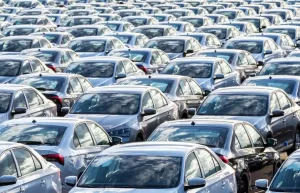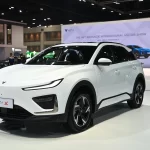Vietnam’s Automotive Market Defies Regional Trends with 24% Growth as Hybrid Vehicles Lead the Charge
In a remarkable display of economic resilience, Vietnam’s automotive sector is defying regional trends, recording an impressive 24% year-on-year sales increase in the first quarter of 2025, while the broader ASEAN-5 market contracted by 1.7%. This exceptional growth positions Vietnam as the standout performer among Southeast Asian automotive markets and signals a significant shift in the region’s automotive landscape.
Record-Breaking Q1 Performance
The Vietnamese vehicle market has accelerated quickly in 2025, with Q1 figures rising 46.9% year-on-year to reach 101,137 units. According to the Vietnam Automobile Manufacturers’ Association (VAMA), total market sales reached 101,834 units in the first four months of 2025, marking a 23% increase compared to the same period last year. This robust growth comes after the market posted its highest monthly sales for Q1 in March, with 31,750 vehicles sold – up 47% from February and 16% higher than March 2024
The growth trajectory is particularly impressive considering the challenges faced by neighboring markets. While Vietnam’s automotive sector flourishes, the ASEAN-6’s Total Industry Volume (TIV) is expected to decline by 5.4% in 2024-2025, primarily due to weakening demand in traditional automotive powerhouses like Indonesia and Thailand.
Hybrid Vehicles Driving Market Expansion
The Vietnamese market’s expansion has been particularly driven by hybrid vehicles, which saw sales surge by 82% compared to the same period last year. In April alone, 973 hybrid vehicles were sold, pushing the cumulative total for the year to 3,535 units. This remarkable growth aligns with the global shift toward greener transportation solutions and is further supported by favorable government tax and fee policies.
Major manufacturers have capitalized on this trend, with Toyota, holding approximately 14% market share, successfully launching its Camry Hybrid, while Suzuki has gained traction with its XL7 hybrid SUV introduced in September. Honda has also seen strong demand for its hybrid models, contributing to the segment’s explosive growth.
Electric Vehicle Revolution
Beyond hybrids, fully electric vehicles are experiencing unprecedented growth in Vietnam. EVs now account for approximately 40% of the market share, with domestic manufacturer VinFast leading this revolution. VinFast has secured market leadership with 34,831 sales in Q1 2025, representing a staggering 176.8% increase year-on-year.
The VinFast VF 3 has emerged as the best-selling model in the country, followed by the VinFast VF 5, demonstrating the strong consumer appetite for locally manufactured electric vehicles. This success has been bolstered by government incentives, including a 100% registration fee waiver for electric vehicles implemented in 2024.
Market Structure Shifts
A significant transformation is occurring in Vietnam’s market structure between domestic and imported vehicles. In March 2025, for the first time in years, imported vehicles (16,863 units) surpassed domestic sales (14,887 units). This shift highlights the changing dynamics of Vietnam’s automotive landscape and the increasing competition from international brands.
Despite this trend, domestically assembled vehicles still maintain a strong presence, with 13,890 units delivered in April 2025. The government continues to support local production through various incentives, including temporary registration fee reductions and interest rate cuts.
Brand Performance and Market Leaders
Toyota has maintained its market leadership with 5,566 units sold in April 2025, followed by Ford (3,997), Mitsubishi (2,038), THACO Mazda (2,736), and THACO Kia (2,055). The best-selling models included the Mitsubishi Xpander (4,031 units), Ford Everest (1,090), and Toyota Yaris Cross (1,030).
By product category, SUVs continue to lead with 5,867 vehicles sold in April, followed by MPVs with 3,798 vehicles and sedans with 3,292 vehicles. This distribution reflects Vietnamese consumers’ growing preference for larger, more versatile vehicles.
Future Outlook and Challenges
The Ministry of Industry and Trade has forecast that Vietnam’s automobile market could grow by approximately 12% in 2025, with sales expected to reach 600,000 units. Looking further ahead, demand is projected to reach 800,000–900,000 cars in 2025 and up to 1.8 million by 2030.
However, the industry still faces significant challenges. The influx of completely built-up (CBU) imported vehicles is likely to exert pressure on domestic manufacturers. Additionally, Vietnam’s automotive industry remains in a developmental stage with low localization rates. While about 70% of vehicles sold are assembled domestically, only 20% of their components are produced within Vietnam, reflecting a heavy dependence on imported parts and raw materials.
High bank interest rates and the sluggish performance of other economic sectors, such as real estate and stock markets, have also impacted automobile purchasing power. In response, many auto companies have reduced profits by offering incentives to stimulate consumer demand.
Despite these challenges, industry experts believe that with increased consumer demand and supportive policies from automakers, the domestic automobile market is forecast to further thrive in the second and third quarters of this year. Vietnam’s commitment to becoming a regional hub for EVs and the broader automotive sector continues to drive innovation and investment in this rapidly evolving market.



